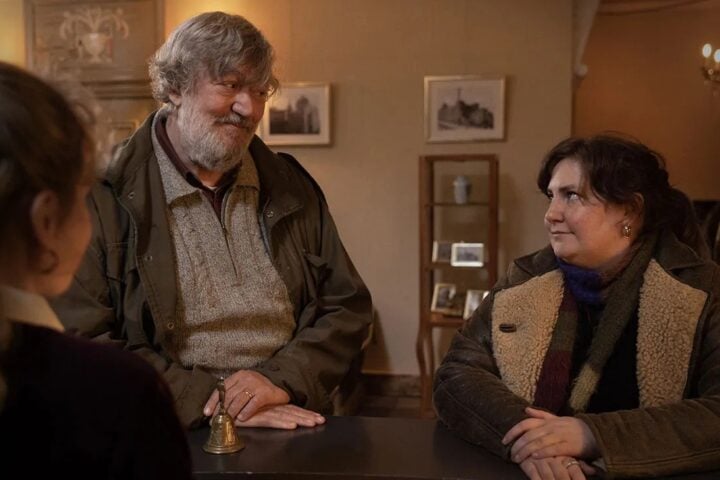Played by Sofía Otero, the child at the center of Estibaliz Urresola Solaguren’s 20,000 Species of Bees knows something that many children do, and that adults work hard to suppress: that it takes very little to slide from one gender to another. Merely having long hair, for instance, and not correcting someone (mis-)taking a supposed boy for a girl can suffice.
Armed with this intuitive knowledge, the film’s protagonist is plunged into the pleasures and terrors of being seen as a girl during her summer vacation in the Basque Country with her family. This is a child who takes on many names (Aitor, Coco, and Lucia), depending on who strangers take the child for and how safe she feels in her surroundings. Is a child not an ocean of multiplicities looking to play? As the title of Urresola Solaguren’s film suggests, and one of the local girls tells Coco: There are 20,000 species of bees, “and they are all good.”
As she stays within the girl-ness that others presume her to have, Coco realizes her gender play is serious business. Not only because being mistaken for someone we are can sometimes show us who we’ve always been, or want to be, but because it can make adults panic. Throughout the film, Urresola Solaguren entwines Coco’s discoveries with the resurfacing of other taboos that Coco’s grandmother, Lourdes (Ane Gabarain), and sculptor mother, Ane (Patricia López Arnaiz), have been harboring in the deep recesses of their psyches, and which has plenty to do with the sculpting workshop where Ane’s late father’s own artwork is kept alongside hers.
The film suggests that our sense of gender identity bears the imprints of our family histories—mostly the ones that have been rotting in the basement somewhere but scripting our identifications all along. The very idea of identity as a question of unstable labor is suggested when Urresola Solaguren cuts from sequences where Coco figures out how to enjoy the various possibilities of gender to scenes of Ane assembling human mannequins made of beeswax.
The film seems to say that becoming a human subject is no different. That is, a child is an assemblage that’s put together, one that rarely obeys the demands of society’s fantasies for it. The demands may be binary, but the potential configurations are in the thousands.
Blunt and often redundant in its narrative structure, 20,000 Species of Bees also suffers from its fair share of on-the-nose dialogue (“Did you always know you were a boy?” Coco asks her brother at one point) and clichés (as in Ane being blamed for Coco’s transness for having “overindulged” her). But the film features a handful of moments where, instead of literally addressing Coco’s gender trouble, we’re simply allowed to inhabit it, and it blooms as a result.
This is best captured when Coco runs away to the woods and her family keeps shouting her birth name as they desperately look for the child: “Aitor! Aitor! Aitor!” Coco only responds once her brother (Unax Hayden) starts shouting, “Lucia! Lucia! Lucia!”—the name Coco had decided to keep for herself. The child eventually turns up, but she knows any name is bound to stifle. When asked what she wants to be called, the child eventually says, “Don’t call me anything.”
Since 2001, we've brought you uncompromising, candid takes on the world of film, music, television, video games, theater, and more. Independently owned and operated publications like Slant have been hit hard in recent years, but we’re committed to keeping our content free and accessible—meaning no paywalls or fees.
If you like what we do, please consider subscribing to our Patreon or making a donation.


